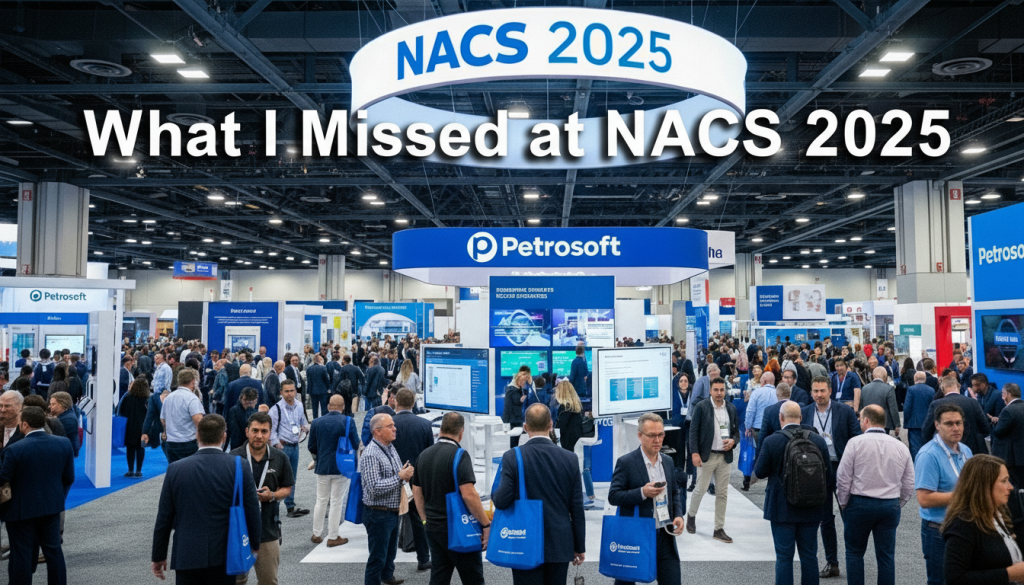Estimated reading time: 6 minutes
The NACS show just finished up and your head’s probably swimming. AI analytics, frictionless payment, cloud everything—it was a firehose of technology. If you were there, you probably noticed the technology section was often tucked away, seeming like it was in the furthest corner of the expo floor, but it was certainly where all the future-focused energy was concentrated. For the independent c-store and fuel retailer, the core question isn’t “What’s the newest gadget?” but “What’s worth spending money on right now to make my business better?”
We’re going to ignore the shiny stuff and just have a straight-up conversation about what you need to prioritize to save time, prevent loss, and drive profit.
Identifying the Core Problems You Needed to Fix
Before buying anything, you gotta know where the leaks are. New technology is an investment, and the only way to justify the cost is to prove your current operational flaws cost more than the solution. You need to become a detective in your own store.
Walk your store and back office. Watch your staff. Where are the moments of repetitive, error-prone, or manual work? For example, are managers spending excessive hours doing inventory counts or manually fixing mistakes at the register? The NRF (National Retail Federation) consistently points to high workforce turnover as a major cost driver in retail; if staff are stressed by clunky, slow systems, they’re more likely to leave. Or maybe you’re dealing with constant Inventory Issues—items that are out-of-stock during peak hours, or a pile of stale product in the back. That is invisible profit loss. The NACS State of the Industry report shows that controlling shrink (which includes operational errors) is essential, with some data showing accelerated merchandise shrink recently.
If your accounting still involves exporting data from your POS, re-keying it into a spreadsheet, and then doing a two-step transfer to your general ledger, you’re just wasting valuable, highly paid labor time. Put a dollar figure on that wasted time. If manual fuel reconciliation takes a manager three hours every week, that is over 150 hours per year they aren’t spending training staff or improving the foodservice offer, and that is a significant number. This is why retailers should look into the history of the UPC barcode and how it revolutionized inventory control in the 1970s, now that was a game changer because it directly addressed that kind of inefficiency.
What Your Store Must Have in 2025
NACS shows you everything, but not everything is a priority for a single operator. You’ve got to prioritize technology based on its direct impact on compliance and core profit drivers. These are the foundational systems that provide control and data clarity—the absolute necessities for running a modern store.
First, you absolutely need a Unified Back-Office with Live POS Sync. Your back office must be the single source of truth. Every sale needs to instantly update inventory, the price book, and your financial reports. Second, Real-time Inventory Visibility is non-negotiable, knowing exactly what is on the shelf reduces costly over-ordering and stock-outs. Third, your system must be EMV and PCI-Compliant; this isn’t optional; it’s a necessary shield against liability and card fraud. Finally, you have to get away from local PC files and get your data into a Cloud-based Data and Automated Reporting system. Data needs to be secured and accessible from anywhere, and reports should run themselves.
You can save the fancy stuff—AI forecasting, self-checkout kiosks, integrated customer loyalty programs—for later. They’re great for growth, but they layer on after the foundation is set.
Choosing the Right Technology Partner
The Back Office is the brain of your business. Choosing the wrong partner means years of integration headaches, so choose wisely. The biggest differentiator is Integration. Does the system connect to all your critical systems automatically—your POS, fuel control systems (Gilbarco, Verifone, etc.), accounting software, and vendor data feeds? If it requires manual work to link systems, it is not worth the cost. Also, if you plan to open a second or third location next year, the platform must handle multi-location dashboarding and management natively.
Most retailers struggle because their systems operate in silos. The POS data is separate from the inventory data, which is separate from the accounting data, and this leads to data silos, errors, and wasted time. Petrosoft showed at NACS 2025 that the solution is a truly integrated ecosystem. Their connected platform, including SmartPOS and CStoreOffice®, solves this integration problem head-on by delivering one source of truth for every transaction and inventory movement, eliminating manual data entry and drastically reducing shrinkage and human error.
Once you buy the tech, you don’t launch everything on the same day; that’s chaos. Start with the back-office and inventory, then add fuel automation, and finally, loyalty and analytics. After 90 days, you must reassess and adjust. Did the new system actually reduce shrink? Are managers spending less time on manual reporting? If the system isn’t delivering, revisit your staff training and configuration, not just the technology itself.
The takeaway from NACS 2025 is that the winners aren’t those who have the most gadgets—but those who have connected systems that deliver results. It was clear overall traffic seemed thinner than years past, but honestly that allowed for much better, deeper conversation between vendors and attendees, and that’s where the real value is found. A fully integrated ecosystem like Petrosoft’s SmartPOS + CStoreOffice represents where the industry is headed. Don’t chase trends. Choose technology that solves your biggest daily problems, making your business run smarter, faster, and more profitably.
FAQ for C-Store/Gas Station Owner-Operators
My current POS is ancient but it’s paid for. Do I have to replace it?
You absolutely need a system that is PCI-compliant and EMV-ready. If your POS can’t seamlessly and automatically link all sales data to a modern back-office platform (like CStoreOffice), the cost you save by keeping it is often less than the money you lose in shrink, errors, and wasted labor. Think of it as a hidden tax you pay every day.
How do I know if I’m losing money to shrink caused by human error versus theft?
This is where a unified system shines. Dedicated back-office platforms (with a loss prevention module) automatically run exception-based reporting. It compares inventory movements, voids, refunds, and cash drops against sales data. It highlights transactions with discrepancies (e.g., a high number of refunds from one employee, or a large discrepancy between expected and actual inventory counts), telling you exactly where and why the loss occurred, whether it was theft or operational error.
We only have one store. Is cloud-based back-office overkill?
No, it’s essential. A cloud-based platform means zero IT overhead for you, automated security updates, and secure data backup. Plus, it gives you a mobile dashboard so you can check sales, margin, and key reports from your phone while you are away from the store. This ability to monitor remotely drastically increases operational oversight for a small business owner.


